The Blue Bird is one of the most iconic and beloved birds in the United States. Found throughout all 48 contiguous states, these small songbirds are a common sight in many of our backyards and gardens.
With their distinctive blue feathers, they are easily identified by most birdwatchers. Blue Birds are a favorite among American birders because of their beautiful song, their graceful flight, and their important role in our ecosystem.
Not only do they help keep insect populations in check, but they also help to disperse the seeds of many plants. Because of their importance to our environment, Blue Birds are protected in many parts of the United States by federal and state laws.
1. Bluebirds
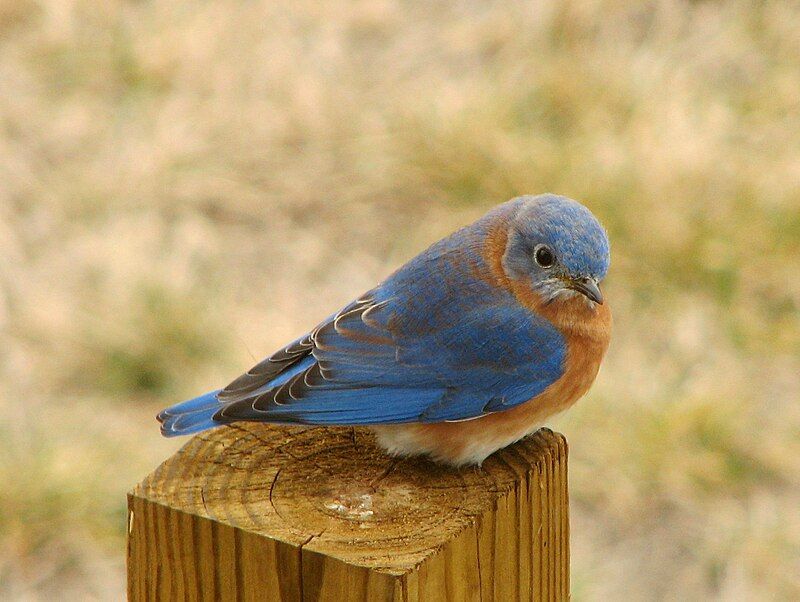
Bluebirds are a type of bird found in North America that typically measure in size between small and medium.
They are mainly insectivorous or omnivorous, meaning they eat both insects and other types of food, and they belong to the Passerines, a large order of birds that includes sparrows, finches, and warblers.
Bluebirds are also one of the few species of thrush birds found in the Americas. When it comes to reproduction, bluebirds lay an average of 4 to 6 eggs, which are typically pale blue or light green in color.
The eggs are incubated by both parents, and they will stay with their chicks until they are ready to leave the nest. Generally, it takes about two weeks for the chicks to fledge, and the parents will continue to feed them for the first several weeks of their lives.
| Kingdom | Animalia |
| Phylum | Chordata |
| Class | Aves |
| Order | Passeriformes |
| Family | Turdidae |
| Genus | Sialia |
2. Eastern Bluebird
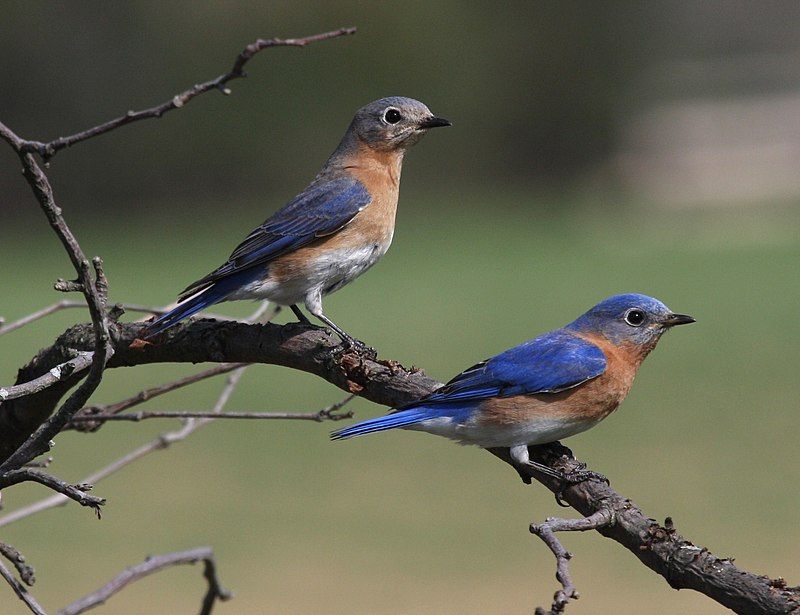
The Eastern Bluebird is a species of small thrush, native to North America. It is a migratory bird, meaning that it can be found in many different areas throughout the year.
This bluebird is easily recognizable because of the bright blue plumage of the males, which can be seen perched on wires or other open perches. This makes it a popular bird for birders, or people who are passionate about birds.
The Eastern Bluebird can be found in open woodlands, farmlands, and orchards. This species is often seen in these areas during the breeding season, as they form pairs and look for nesting sites. They feed on insects, and also on fruits and berries.
It is important to create habitats for the Eastern Bluebird to ensure its continued survival, as its population has declined in recent years. In addition to its beauty, the Eastern Bluebird is also known for its melodic song.
This species of bird is often heard singing in the early morning hours. Its call is a distinctive trill, which is often used to attract a mate. Overall, the Eastern Bluebird is a beautiful and iconic species of bird that can be enjoyed by birders and non-birders alike.
Its bright blue plumage and melodic song make it a favorite among many. It is important to create habitats for this species so that it can continue to flourish in the future.
| Kingdom | Animalia |
| Phylum | Chordata |
| Class | Aves |
| Order | Passeriformes |
| Family | Turdidae |
| Genus | Sialia |
| Species | S. sialis |
3. Mountain Bluebird
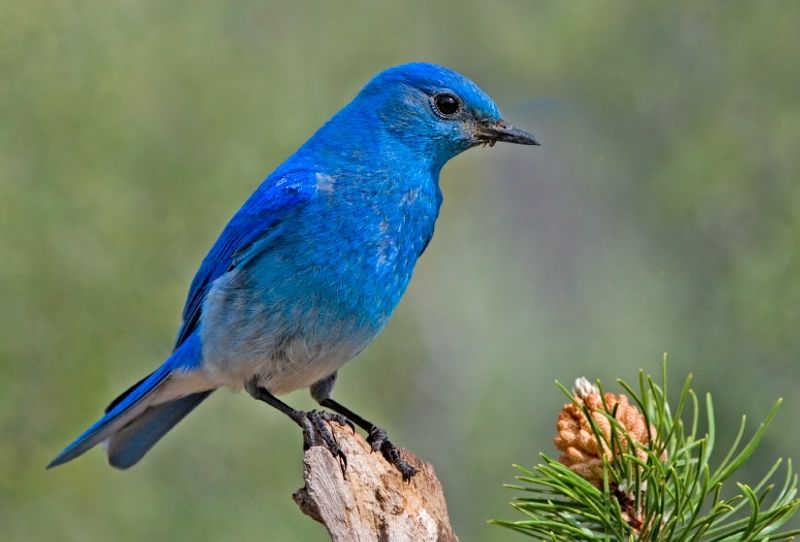
The mountain bluebird is a small, migratory thrush that is found in mountainous regions of western North America. It is easily recognizable by its light underbelly and black eyes, along with the male’s bright turquoise-blue plumage, which is somewhat lighter underneath.
The male’s bill is also thin and distinct. This bird is an important part of the ecology of these mountainous regions, and its bright plumage makes it a popular sight. It is known for its melodic songs and its active flight pattern, often flying in large flocks.
The mountain bluebird is also an important part of the food chain, helping to keep insect populations in check. These birds can often be found perched on fence posts or other high points, singing their songs. It is a truly beautiful bird that is a pleasure to observe.
| Kingdom | Animalia |
| Phylum | Chordata |
| Class | Aves |
| Order | Passeriformes |
| Family | Turdidae |
| Genus | Sialia |
| Species | S. currucoides |
4. Blue Jay
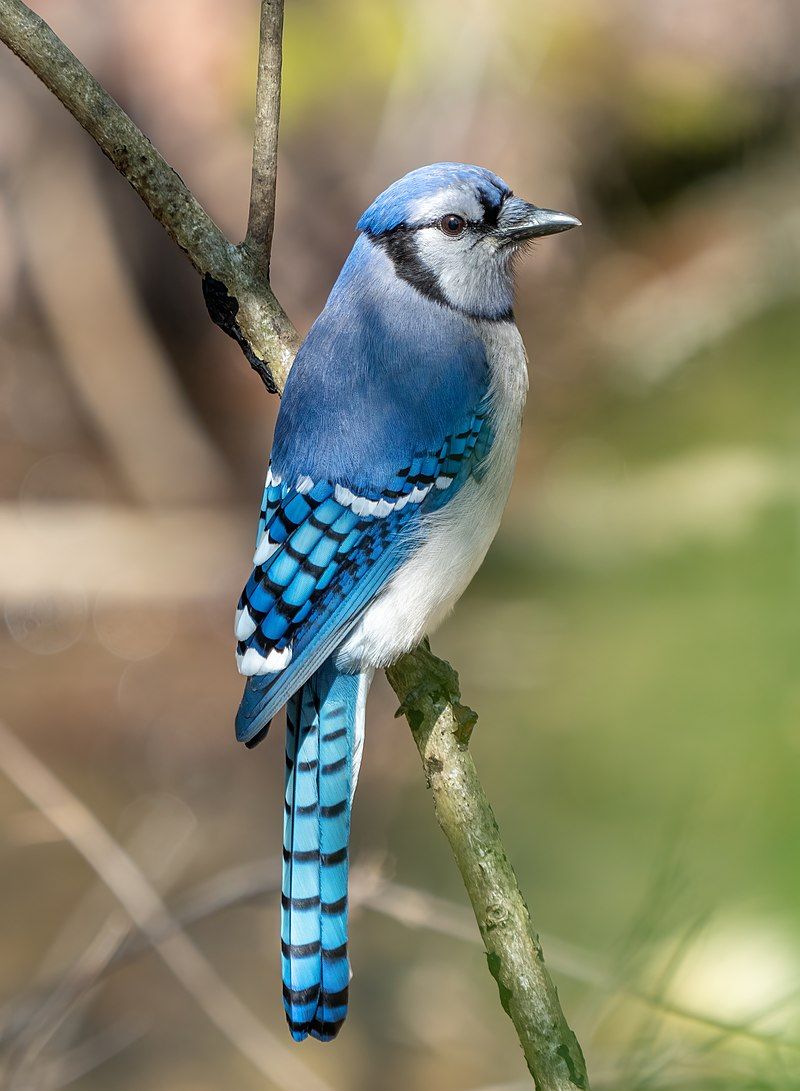
The blue jay is a type of bird that belongs to the Corvidae family, which is native to eastern North America. This bird is a resident in most of the eastern and central United States, as well as Newfoundland, Canada.
In addition, there are breeding populations of blue jays across southern Canada. This suggests that some of the eastern populations of blue jays may be migratory, which means they go to other parts of the continent during certain times of the year.
Blue jays are known for their intelligence and can be found in a variety of habitats, from woods to gardens. They have a distinctive blue coloration with a white chest and black markings on their wings, tail, and head.
They are also very vocal birds and can be heard throughout the year making a variety of calls and songs. Blue jays are omnivorous, meaning they eat both plants and animals. They are known to feed on a variety of items, from nuts and fruits to insects and even small mammals.
Blue jays are also known to hoard food, which is believed to help them survive the winter months when food is scarce. The blue jay is an iconic bird of North America and is a valuable asset to the natural environment.
They help to control insect populations, provide food and shelter for other animals, and are a great source of enjoyment for bird watchers.
| Kingdom | Animalia |
| Phylum | Chordata |
| Class | Aves |
| Order | Passeriformes |
| Family | Corvidae |
| Genus | Cyanocitta |
| Species | C. cristata |
5. Cyanocitta
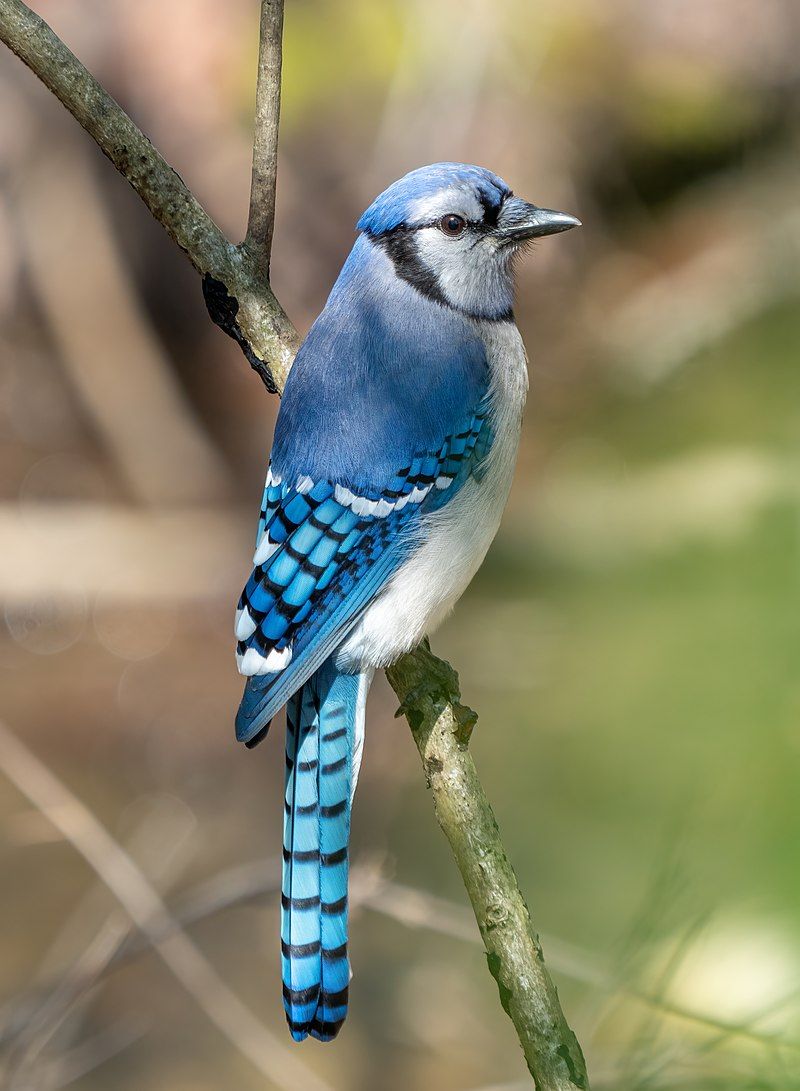
Cyanocitta is a genus of birds belonging to the Corvidae family, which includes crows, jays, and magpies. It was first identified by Hugh Edwin Strickland in 1845 and currently contains one species.
The genus name Cyanocitta is derived from two Greek words – ‘kuanos’ which means ‘dark blue’, and ‘kitta’ which means ‘jay’. This genus includes birds with predominantly blue feathers, and the name reflects this.
They are also known for their intelligence and resourcefulness, traits commonly associated with other members of the Corvidae family. They are found in North America, where they inhabit woodlands and forests.
They are considered to be important seed dispersers, helping to keep forests healthy and biodiverse.
| Kingdom | Animalia |
| Phylum | Chordata |
| Class | Aves |
| Order | Passeriformes |
| Family | Corvidae |
| Genus | Cyanocitta |
6. Blue Grosbeak
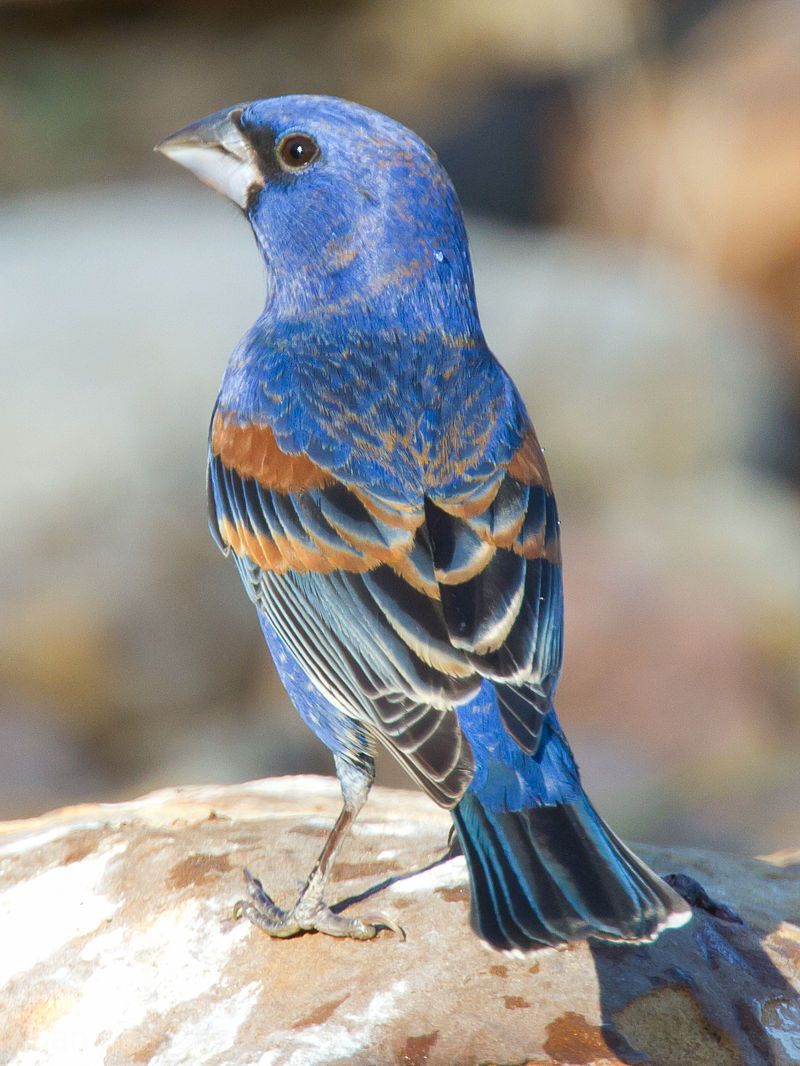
The blue grosbeak is a type of bird that belongs to the Cardinalidae family, which is also known as the Cardinal family. It has a medium-sized body and is native to North America.
It is mainly a migratory bird, as it spends winter in Central America and breeds in northern Mexico and the southern United States. The male of the species is easily noticeable, as it has a blue body and two brown wing bars.
This species is generally found in woodlands, savannas, and open fields, and they tend to feed on weeds, seeds, and insects. The blue grosbeak is a beautiful bird that is known for its bright blue plumage and musical call.
| Kingdom | Animalia |
| Phylum | Chordata |
| Class | Aves |
| Order | Passeriformes |
| Family | Cardinalidae |
| Genus | Passerina |
| Species | P. caerulea |
7. Steller’s Jay
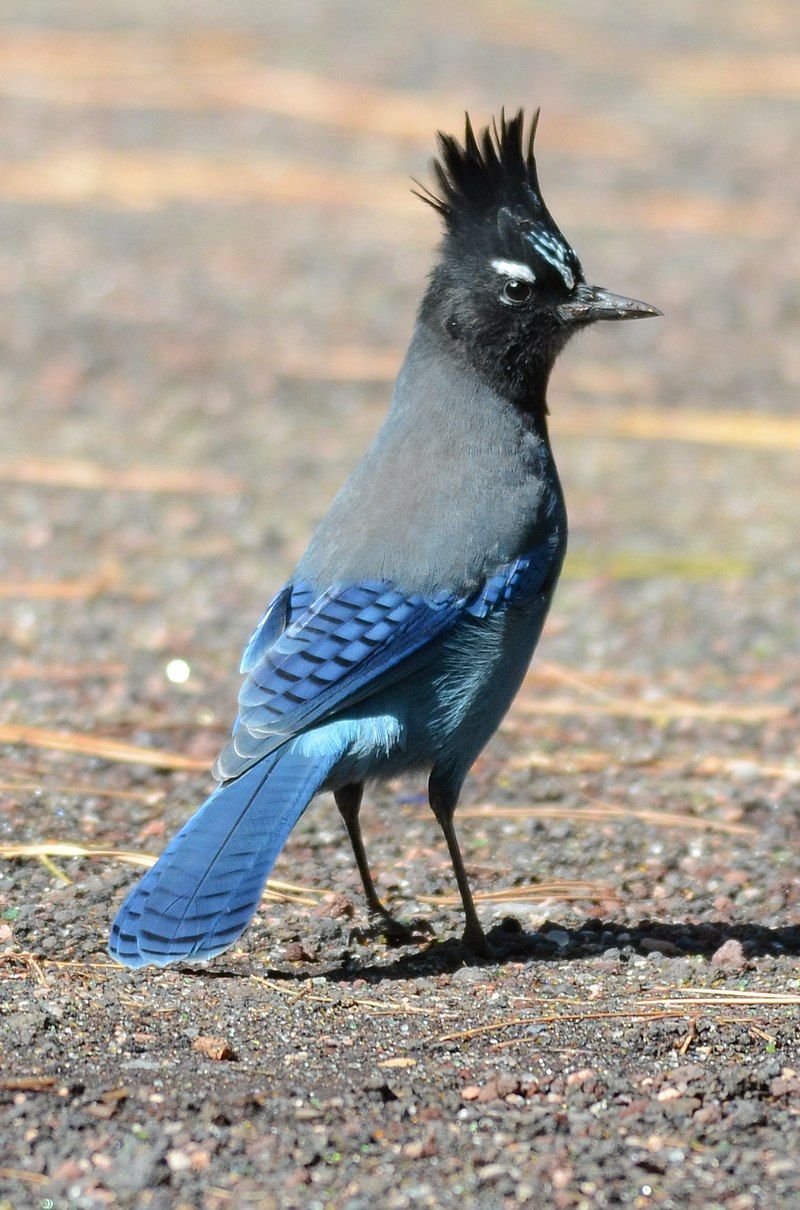
Steller’s jay is a species of bird that is native to western North America and the mountains of Central America. It is closely related to the blue jay that is found in eastern North America and is the only crested jay species that lives west of the Rocky Mountains.
Steller’s jays are easily recognizable because of their distinct blue feathers and bright white markings on their wings and tails. They have a black head and back, with a blue crest on top of their head, and are often seen in open woodlands or near mountain streams.
They feed on nuts, berries, and insects, and can even mimic the calls of other birds. They are also known to store food in caches for later use.
Steller’s jays are highly intelligent, playful, and social birds, and they are a well-studied species that is beloved by many bird enthusiasts.
| Kingdom | Animalia |
| Phylum | Chordata |
| Class | Aves |
| Order | Passeriformes |
| Family | Corvidae |
| Genus | Cyanocitta |
| Species | C. stelleri |
8. Black-throated Blue Warbler
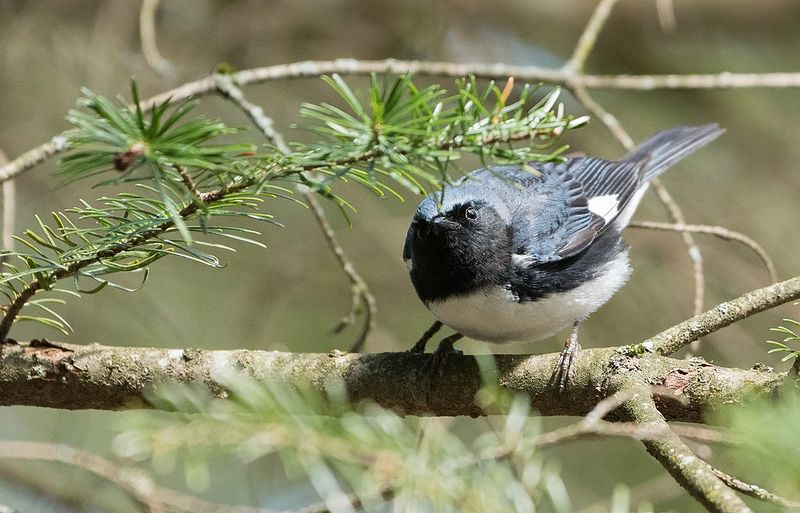
The black-throated blue warbler is a species of bird from the New World warbler family. It resides in deciduous and mixed coniferous forests, primarily in eastern North America.
During the winter months, these birds migrate to the warmer climates of the Caribbean and Central America. This species has a black throat with a bright blue back and wings, making it quite distinctive.
Additionally, its song is a pleasant trill that is often heard echoing through the forest. The black-throated blue warbler feeds mainly on insects, which it catches by flying and hovering in the air.
This species builds its nest in a tree or shrub near the ground, and the female lays three to five eggs at a time.
The chicks hatch after 12 days, and the parents feed them for about two weeks before the young birds fly away and become independent. These warblers are quite common in their range, but their populations are declining due to habitat loss and degradation.
It is important that we protect these birds and their habitats in order to ensure their future survival..
| Kingdom | Animalia |
| Phylum | Chordata |
| Class | Aves |
| Order | Passeriformes |
| Family | Parulidae |
| Genus | Setophaga |
| Species | S. caerulescens |
9. Little Blue Heron
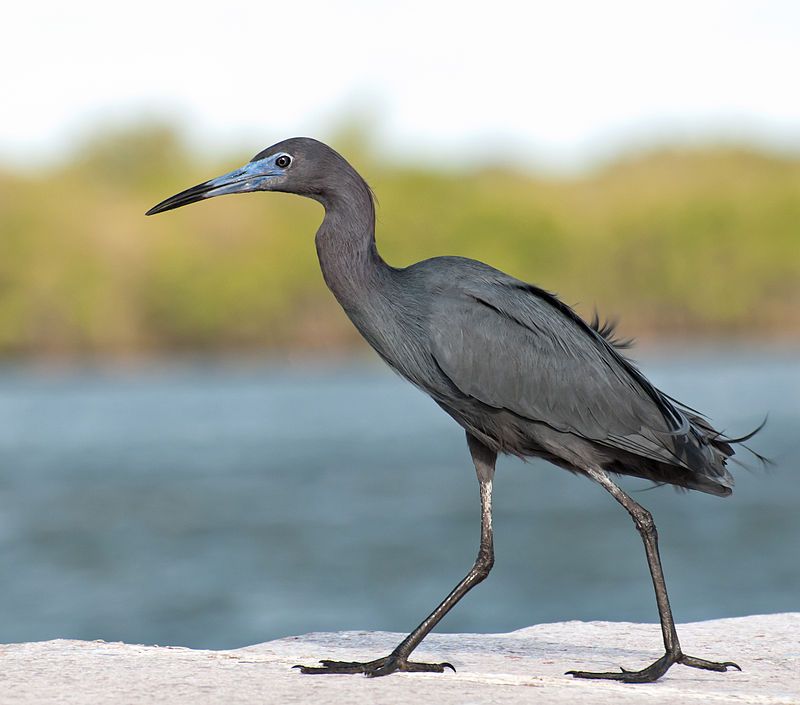
The little blue heron is a small bird belonging to the genus Egretta. It has a dark blue plumage with a two-toned bill. Young birds are mainly white, giving them a similar look to the snowy egret.
During the breeding season, adult little blue herons develop a unique coloration on their head, legs, and feet. This coloration is mainly gray and white, with some areas showing iridescent blue and green. The bill of the adult heron is black above and yellow below.
The legs and feet are also black, while the head has a few white feathers. This coloration helps the adults to stand out and identify each other. The breeding season is also the time for courtship rituals, with the males displaying their colorful feathers to attract females.
The little blue heron has a wide range of habitats, from marshes and wetlands to grasslands and woodlands. It is also found in mangrove swamps and estuaries. The heron is a solitary bird, but during the breeding season, it forms large colonies.
The diet of the little blue heron consists mainly of fish, amphibians, crustaceans, and insects.
| Kingdom | Animalia |
| Phylum | Chordata |
| Class | Aves |
| Order | Pelecaniformes |
| Family | Ardeidae |
| Genus | Egretta |
| Species | E. caerulea |
10. Blue-gray Gnatcatcher
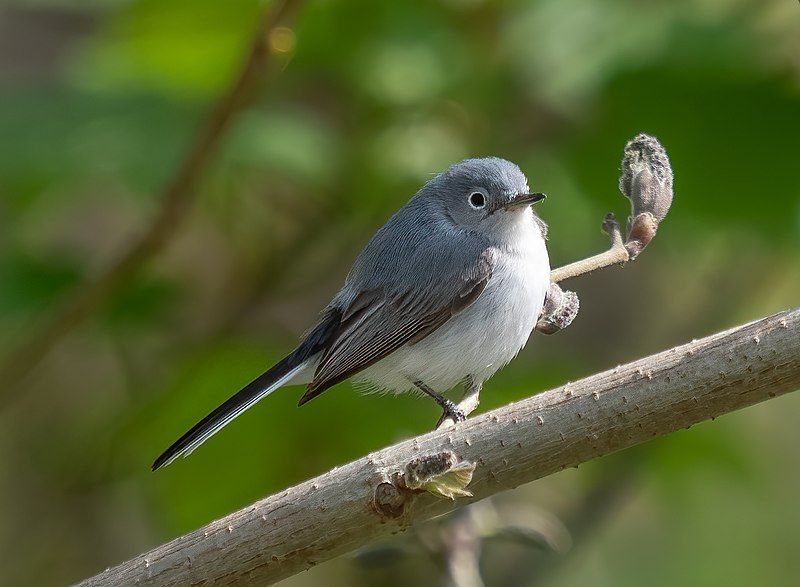
The blue-gray gnatcatcher is a species of small songbird found in North America. It is a member of the family Polioptilidae, which includes other species of gnatcatchers and is also known as the blue-grey gnatcatcher.
It is a migratory species, with breeding grounds in the northern parts of the continent, and wintering grounds in the south. The blue-gray gnatcatcher is a small bird, measuring around 13 to 15 centimeters in length and weighing only about 8 to 11 grams.
It has a blue-grey upper body, with a white underside and white wing bars. Its wings are rounded, and its tail is short and square-tipped. The blue-gray gnatcatcher is a vocal species, with a variety of soft, high-pitched songs.
It feeds mainly on small insects, such as midges, mosquitoes, and gnats, which it catches in its beak while in flight. It is a solitary species, preferring to forage and nest alone.
The blue-gray gnatcatcher is an important part of the North American avian fauna and is a species of conservation concern due to habitat destruction and other threats.
| Kingdom | Animalia |
| Phylum | Chordata |
| Class | Aves |
| Order | Passeriformes |
| Family | Polioptilidae |
| Genus | Polioptila |
| Species | P. caerulea |
11. Purple Martin
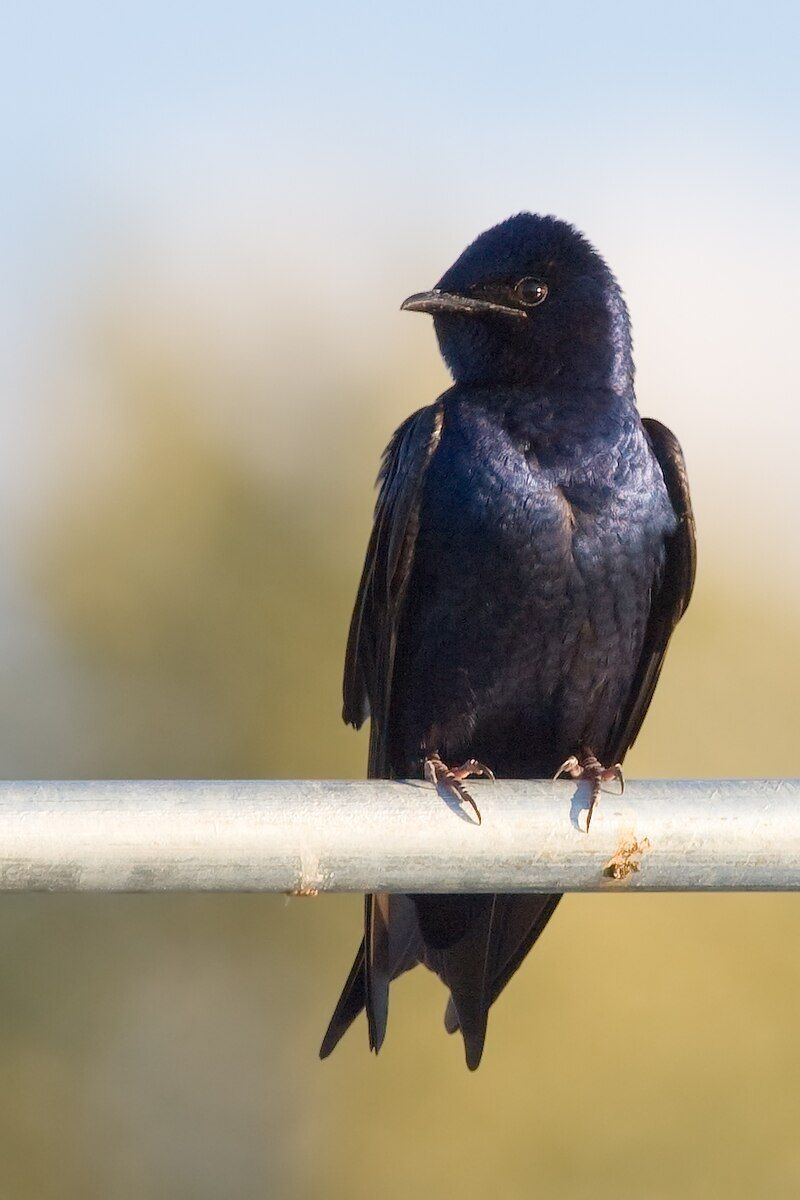
The purple martin is a type of bird that is part of the swallow family, Hirundinidae. It is the largest species of swallow found in North America. Its name implies that it has purple feathers, but that is not the case.
The bird is actually a glossy dark-blue or black, with a few lighter blue feathers on its back. While the purple martin is not actually purple, it is still a beautiful bird. It has a long and pointed wingspan, with a forked tail.
Its plumage is sleek and glossy, and its body is slender and aerodynamic. Its bill is long and slightly curved, and its eyes are a striking deep black. The purple martin is a highly social bird, often gathering in large flocks and roosting communally in large colonies.
They are also highly migratory, traveling long distances to reach their preferred breeding grounds.
| Kingdom | Animalia |
| Phylum | Chordata |
| Class | Aves |
| Order | Passeriformes |
| Family | Hirundinidae |
| Genus | Progne |
| Species | P. subis |
12. Great Blue Heron

The great blue heron is a majestic creature that can be found in many areas throughout the Americas.
It is a large wading bird that belongs to the heron family Ardeidae and is quite common in many parts of North and Central America, as well as far northwestern South America, the Caribbean, and the Galapagos Islands.
It can be found in both fresh and saltwater habitats, usually near the shore of open water and in wetlands. This species of heron is most easily identified by its long, slender neck and its large blue-gray body.
It typically stands at a height of up to four and a half feet and has long legs and long toes which help it to wade through the shallow waters.
Its wingspan can reach up to six and a half feet, making it one of the largest birds in the United States. The great blue heron is quite a solitary bird, usually seen alone or in small groups.
It is a skilled hunter, often stalking its prey before quickly spearing it with its long, sharp beak.
Its diet consists mainly of fish, amphibians, and other small aquatic animals, although it will also eat insects and small mammals if available. In recent years, the great blue heron has faced some challenges due to climate change and habitat destruction.
As wetlands and other suitable habitats become increasingly scarce, the species has been forced to seek alternative areas to live and breed.
Fortunately, conservation efforts have been successful in protecting the species, and the population of great blue herons is now considered to be stable.
| Kingdom | Animalia |
| Phylum | Chordata |
| Class | Aves |
| Order | Pelecaniformes |
| Family | Ardeidae |
| Genus | Ardea |
| Species | A. herodias |
13. Blue Mockingbird
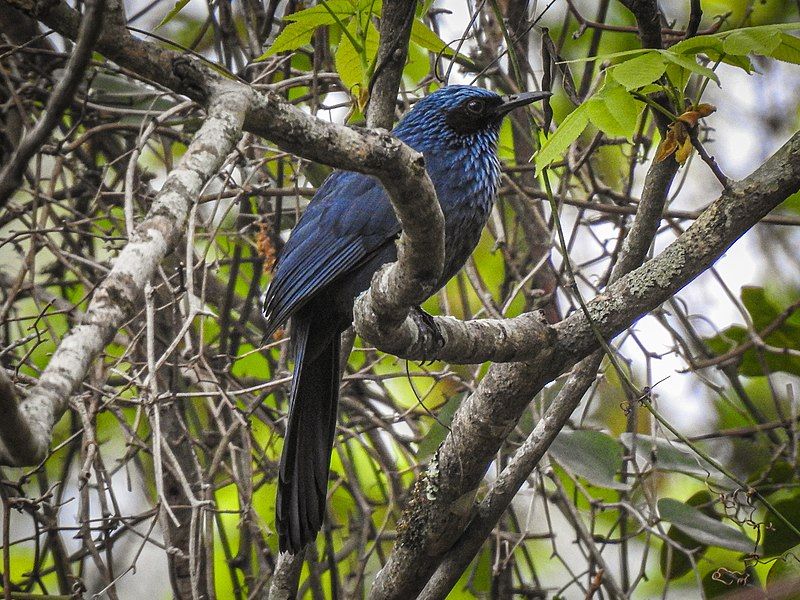
The blue mockingbird is a species of bird that is native to Mexico. It belongs to the Mimidae family, which includes other species like thrashers and catbirds. The bird is not commonly found in the United States, although there have been occasional sightings.
Its preferred habitats are typically tropical and subtropical dry forests, subtropical or tropical moist montane forests, and heavily degraded forests. Its presence in these areas is an indication of its ability to adapt to different environments.
The blue mockingbird is generally a solitary bird and is known for its beautiful song. Its diet consists mainly of insects, fruits, and berries. It is a ground-dwelling bird, often found foraging for food in leaf litter.
The blue mockingbird is an important species in its native region, due to its role in controlling insect populations and dispersing seeds. Its conservation status is listed as “Least Concern” by the IUCN.
| Kingdom | Animalia |
| Phylum | Chordata |
| Class | Aves |
| Order | Passeriformes |
| Family | Mimidae |
| Genus | Melanotis |
| Species | M. caerulescens |
14. Red-breasted Nuthatch
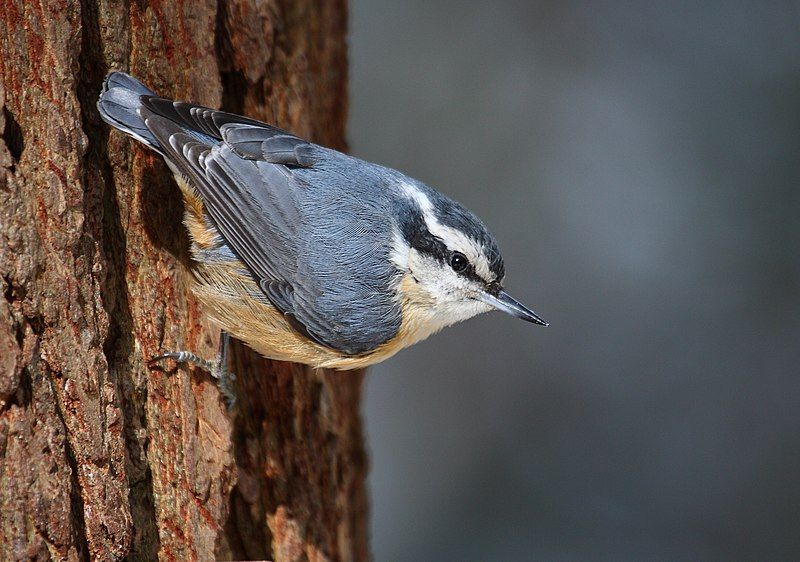
The red-breasted nuthatch is a small songbird characterized by striking blue-grey upperparts, cinnamon underparts, a white throat and face, and a black stripe passing through the eyes. Its bill is straight and grey, and its crown is black.
Its call has been compared to a tin trumpet due to its high-pitched and nasal sound. This species of bird is an interesting one, with its vibrant colors and unique call. It is a frequent visitor to most yards, where its song can be heard throughout the day.
It is a common sight in many parts of the world, and its colorful plumage makes it a beautiful addition to any landscape.
| Kingdom | Animalia |
| Phylum | Chordata |
| Class | Aves |
| Order | Passeriformes |
| Family | Sittidae |
| Genus | Sitta |
| Species | S. canadensis |
15. White-breasted Nuthatch
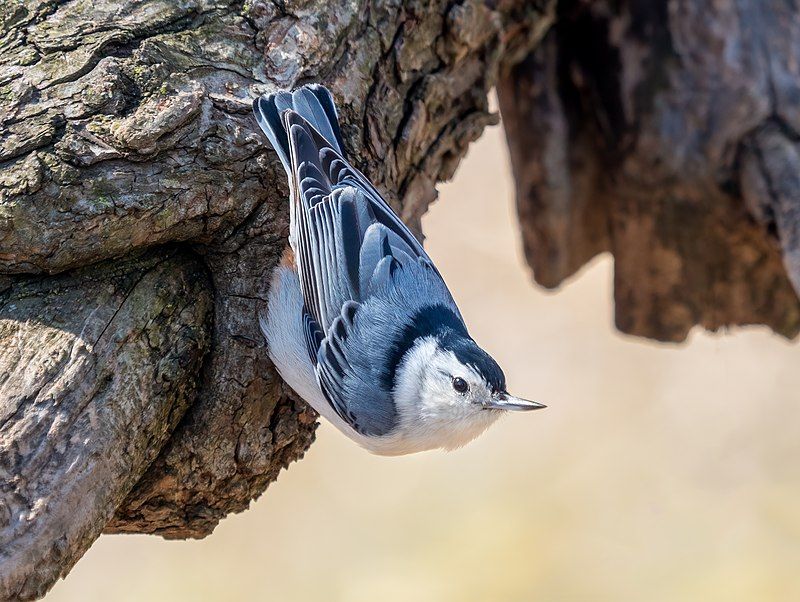
The white-breasted nuthatch is a species of bird belonging to the nuthatch family Sittidae. It is found across a wide range of habitats from coniferous and deciduous forests to woodlands and suburban gardens.
This species has a distinctive appearance, with a large head, short neck, and long tail. Its plumage is mainly white on the breast and grey on the upper parts. It has black wings with white bars and a black stripe on the side of the head.
The white-breasted nuthatch is a medium-sized bird, measuring approximately 15.5 cm in length. It has a stout bill and large, strong feet. This bird is able to climb up, down, and around the trunks of trees.
It feeds primarily on insects and spiders, but may also eat seeds, nuts, and berries. The white-breasted nuthatch is a social bird and often gathers in small flocks in winter. It is a vocal bird and its song is a loud, scolding chatter.
| Kingdom | Animalia |
| Phylum | Chordata |
| Class | Aves |
| Order | Passeriformes |
| Family | Sittidae |
| Genus | Sitta |
| Species | S. carolinensis |
Conclusion
Bluebirds remain a beloved species in the United States. They are a source of joy for many, providing a beautiful sight in many areas of the country, as well as a source of food for many local species.
Despite their declining population, their presence is still strong in the United States, and they continue to be a symbol of hope and joy for many people.